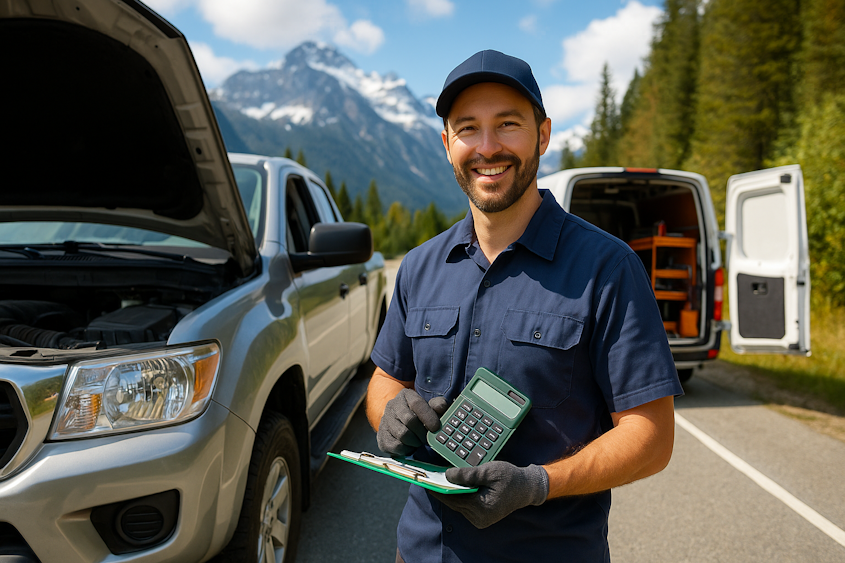You love the freedom, right? Instead of being chained to a single bay, your office is the open road, from the mountains of Whistler down to the fields of Chilliwack. You’re your own boss, helping people get moving again, and you wouldn’t have it any other way. But then tax season hits. Suddenly, that feeling of freedom gets buried under a mountain of receipts and confusing CRA rules. It’s a total headache.
Running a mobile auto repair shop in the Sea-to-Sky or the Fraser Valley has its own rhythm. You cover some serious miles, you deal with crazy seasonal rushes (hello, winter tire chaos!), and you’re basically managing an entire business from the driver’s seat. Think of this guide as your GPS. We’re going to navigate the essentials of filing your taxes, sniffing out every possible deduction, and getting a real grip on your finances. No accounting degree needed, I promise.
Are You a Sole Proprietor or Incorporated? Why Your Business Structure is the Engine of Your Tax Return
Before we start talking write-offs, we need to pop the hood on your business itself. How you’ve legally set things up completely changes the game when it comes to taxes. For most mechanics just getting started, you’ve got two main choices.
- Sole Proprietorship: This is the simplest, most straightforward way to go. You and your business are legally the same thing. You just report all your business income and expenses on a T2125 form, which gets filed right along with your personal T1 tax return. It’s quick and easy.
- Incorporation: This is a whole different beast. You create a separate legal entity—the business is its own “person.” The corporation files its own T2 tax return, and you pay yourself out of it with a salary or dividends. It’s way more complicated and costs more to set up, but it protects your personal assets and can offer some serious tax advantages once you’re making good money.
So, when do you make the jump from a sole proprietorship to a corporation? The general rule of thumb is when your business is making more cash than you actually need to live on. Incorporating lets you leave that extra profit in the company, where it gets taxed at a much lower corporate rate. It’s a big move, so you should absolutely talk it over with an accountant first.
What Can You Actually Write Off? Your Ultimate Mobile Mechanic Deductions Checklist
Alright, this is where you get to tune up your tax return for peak performance. Every single dollar you can legitimately deduct is a dollar that stays in your pocket. As a mobile mechanic, you’re sitting on a goldmine of potential write-offs. Let’s dig in.
The Big One: Claiming Your Work Vehicle Expenses
Your truck or van is more than just a ride; it’s your workshop on wheels. It’s also probably your single biggest tax deduction. The CRA knows this, which means you have to be meticulous about tracking your expenses.
First thing’s first: you have to figure out what percentage of your driving is for work versus for personal errands. The best way? A logbook. Seriously. Use a simple notebook in your glovebox or grab a smartphone app. You need to record your odometer reading on January 1st and December 31st, and track the total kilometers you drove for business calls.
Once you have that business-use percentage, you can claim that exact portion of all your vehicle costs, including:
- Fuel and oil
- Insurance
- Licensing and registration
- Maintenance and repairs
- Lease payments
- Capital Cost Allowance (CCA): This is just the fancy government term for deducting the price of your truck over time. Think of it as claiming the wear and tear as your vehicle gets older.
A word of warning: Don’t get greedy. Claiming 100% business use when you know you use the truck for weekend camping trips is a massive red flag for the CRA. Be honest.
Tools of the Trade: Deducting and Depreciating Your Equipment
Your tools are what make you money. How you claim them on your taxes all comes down to cost. Small stuff—hand tools, wrenches, sockets—are usually considered current expenses. You can deduct their full cost in the year you buy them. Easy.
But what about that shiny new $5,000 diagnostic scanner or welder? That’s a capital expense. Just like your truck, you can’t write off the whole thing at once. Instead, you claim a piece of its cost each year using the Capital Cost Allowance (CCA). The CRA sorts assets into different classes, which just tells you what percentage you can claim each year.
Don’t Forget These Often-Missed Deductions
- Home Office Expenses: Got a dedicated space in your home for paperwork and booking jobs? You can deduct a portion of your home expenses like heat, electricity, internet, and even property taxes.
- Business Insurance: That liability insurance you pay for? It’s 100% deductible.
- Licensing & Fees: Your business license for Squamish or Abbotsford, plus any professional dues you pay, are all write-offs.
- Cell Phone & Internet: Figure out the percentage you use your phone and home internet for work, and deduct that portion of the bills.
- Accounting & Legal Fees: The money you pay an accountant or lawyer to help with your business is, you guessed it, a deductible expense.
Navigating the Numbers: A Step-by-Step Guide to Filing with the CRA
Once you’ve rounded up all your deductions, it’s time to actually file. Here are the big things you need to watch out for.
- GST/HST: In British Columbia, the magic number is $30,000. Once your business makes more than that in revenue over four straight quarters, you have to register for, collect, and send in GST. But here’s the good news: once you’re registered, you get to claim back all the GST you paid on your business purchases (like parts and fuel). These are called Input Tax Credits (ITCs).
- Income Tax Instalments: If you end up owing more than $3,000 in taxes when you file, the CRA will probably put you on a payment plan for the next year. This just means you’ll pay your expected taxes in quarterly chunks instead of getting slammed with one giant bill.
- Deadlines are Key: For sole proprietors, your tax return is due by June 15th, but any money you owe is due by April 30th. It’s a weird quirk, so don’t get caught. For corporations, your filing deadline is six months after your fiscal year ends.
Don’t feel like wrestling with paper forms? Tax software like Wealthsimple Tax or TurboTax Self-Employed can make this whole process a lot less painful.
Pro Tips for the Sea-to-Sky & Fraser Valley Mechanic
Keeping Records That Won’t Break Down
Good records are your absolute best friend if the CRA ever comes knocking. Stop throwing receipts in a shoebox. Use a simple app like QuickBooks Self-Employed or Wave, or even just a spreadsheet, to track every dollar coming in and going out. Get in the habit of snapping a picture of every single receipt.
Managing Fluctuating Income
Let’s be real, your income can be a rollercoaster. A busy winter tire season is great, but that cash needs to carry you through the slower months. Here’s a simple trick: whenever you have a great month, immediately move 25-30% of it into a separate savings account. Label it “Taxes.” That way, you’re never scrambling when it’s time to pay the government.
Take Control of Your Financial Toolkit
Being a great mechanic isn’t just about fixing vehicles; it’s about running a smart, profitable business. Getting your head around taxes is a massive part of that equation. Just remember the basics: pick the right business structure for you, track every single expense (especially for your truck!), and never, ever miss a deadline.
While this guide is a fantastic starting point, your business is unique. Sometimes the best thing you can do is let a professional take a look under the hood of your finances to spot any potential problems. For personalized advice built for your mobile repair business right here in BC, you can get in touch with an expert accountant who really gets your industry.
Frequently Asked Questions (FAQs)
How do I properly track and claim my truck’s expenses if I also use it for personal trips on weekends?
It all comes down to a detailed logbook. You need to track every kilometer you drive for work appointments and every kilometer for personal trips (like grocery runs or heading to the lake). At the end of the year, calculate your business-use percentage. For example, if you drove 20,000 km total and 15,000 km were for work, your business use is 75%. You can then claim 75% of all your vehicle costs—fuel, insurance, repairs, the works.
I just bought a $5,000 diagnostic scanner. Can I deduct the full amount this year?
Nope, afraid not. Because it’s a major piece of equipment that’s going to last you for years, it’s considered a capital asset. You have to write it off over time by claiming a portion of its cost each year. This process is called the Capital Cost Allowance (CCA).
I often buy parts for a client and include the cost on their final invoice. How does this affect my reported income and GST/HST?
The entire amount you bill your client—parts and labour combined—is your revenue. You report that total as your business income. If you’re registered for GST/HST, you have to charge the tax on that total amount. The upside is you get to claim back the GST/HST you paid when you originally bought the parts. That’s an Input Tax Credit (ITC), and it lowers the amount of tax you have to send to the CRA.
Can I claim the cost of my work boots, coveralls, and other protective gear as a business expense?
For the most part, yes. If it’s specific safety gear required for your job—like steel-toed boots, safety glasses, or fire-retardant coveralls—it’s a legitimate, deductible business expense. You just can’t claim regular clothes, like jeans and t-shirts, that you happen to wear on the job.
I’m a sole proprietor. Should I be setting money aside for CPP contributions, and how much?
Yes, 100%. This is a big one that catches people off guard. As a sole proprietor, you have to pay both the employee and the employer portions of the Canada Pension Plan (CPP). For 2024, that adds up to 11.9% of your net self-employment income (up to a yearly maximum). You absolutely must set this money aside as you earn it, because it can be a huge bill to pay all at once at tax time.

